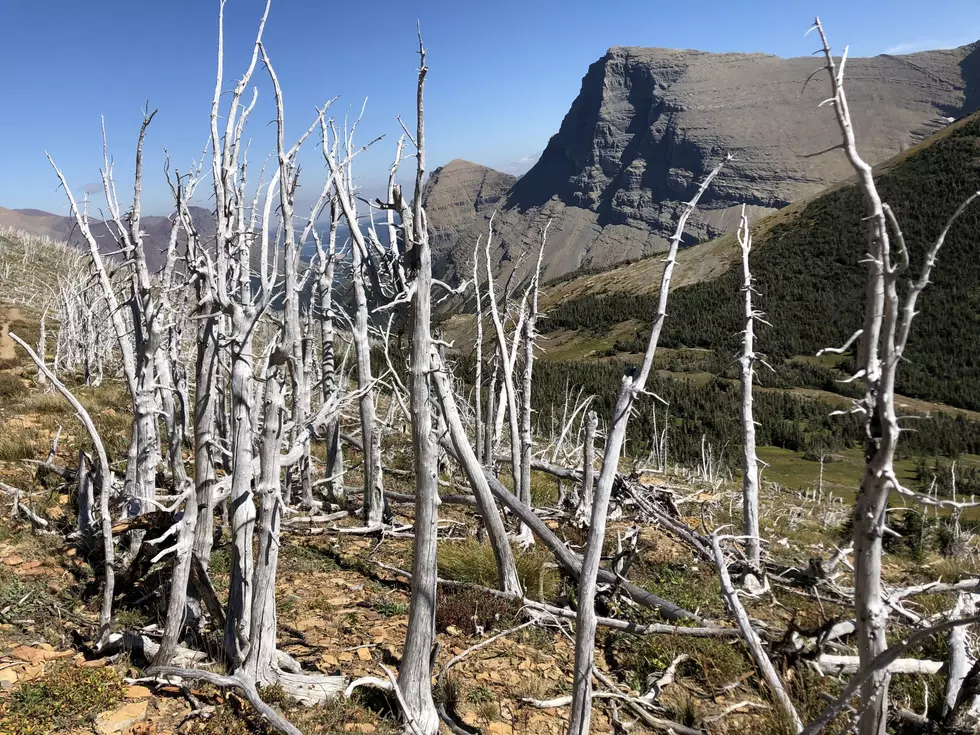
Feds will list whitebark pine as threatened species, citing climate change, deadly fungus
(CN) The stunted and gnarled whitebark pine thrives in harsh subalpine environments, where wind gusts can reach 100 miles per hour during storms and the snow accumulation is copious. When attempting to summit the grandiose mountains of the Sierra Nevada in California, the Cascades of the Pacific Northwest or the Rocky Mountains from Wyoming north through Montana and the Canadian Rockies, the whitebark pine will be the last tree you see before emerging from the treeline.
In fact, it is the species of tree that often establishes the treeline. And it is in trouble.
White pine blister rust, a fungal disease introduced to the forests of British Columbia from Europe, has been infecting whitebark pine trees in the American West for decades, slowly moving down through the Northern Rockies, Cascades and the Northern Sierra.
On Tuesday, the U.S. Fish and Wildlife Service took steps to list the whitebark pine under the Endangered Species Act, making the tree one of the most widely distributed tree species to gain endangered species protections.
The documents, published in the Federal Register on Wednesday, will designate the species as threatened but will stop short of designating certain areas of the forest as critical to the species’ survival. Such designations are controversial because they often limit or entirely prevent development from occurring in identified areas.
The whitebark pine is not threatened only by the rust fungus, but is thought to be susceptible to the depredations of climate change, as average temperatures increase and pests like the mountain pine beetle can move higher in elevation and prey upon the trees.
“The listing means that whitebark pine is the first widely distributed tree that the federal government has clearly pegged as a climate casualty — sadly, as climate change worsens, it will not be the last,” said Natural Resources Defense Council’s wildlife director Sylvia Fallon, who helped write the petition to list the tree.
The petition was first filed in 2008.
The whitebark pine, precious for mountain climbers, is also a foundation species for the subalpine ecology, providing food for grizzly bears and other wildlife species.
“The loss of whitebark pine and its impact on grizzlies and high-elevation forests shows how tightly knit the world is,” said Noah Greenwald of the Center for Biological Diversity. “If we don’t address the extinction crisis by protecting more places, reducing our greenhouse gas emissions and better regulating trade in plants and animals, the natural world and our way of life will unravel before our eyes.”
The whitebark pine also helps in maintaining snowpack at upper elevations, a critical role in California where the snowpack contributes nearly two-thirds of the water used by homes, businesses and farms throughout the Golden State.
The tree is also crucial in precipitating recovery after fires, with many experts worried the reduction in the tree’s population numbers could pose an even greater threat to a landscape already chronically ravaged by wildfire.
In 2008, the year the petition was filed, the greater Yellowstone area lost 80% of its whitebark pine population, according to the NRDC.
Scientists have been busy trying to help the trees resist the rust fungus in particular. Nevertheless, the reduction of pollution and combating the increase in global surface temperatures created by a changing climate will hold the key to the species’ long-term survival.
